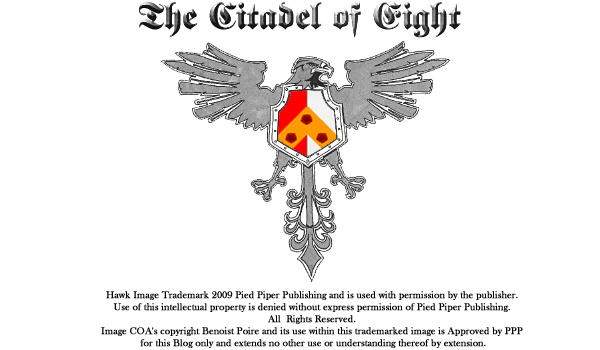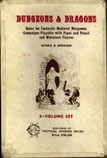
DungeonADay.com (DAD for short) is a subscription-based website managed by the author of the 3rd edition Dungeon Master's Guide, Return to the Temple of Elemental Evil and numerous titles under his own label, Malhavoc Press (among which such excellent OGL products as the Book of Eldritch Might and Ptolus), Monte Cook.
It offers the development of a megadungeon a few rooms at a time, along with numerous side-offerings, for any of the three subcription plans: $10 a month, $84 as a charter member (i.e. $7 a month until April 10, after which it's likely to become $96, $8 a month) or $27 for a quarterly subscription (i.e. $9 a month).
DAD is actually a pretty good offering for vintage gamers out there, since "Dragon's Delve", the dungeons buried under the ruins of Chordille Keep in the Fallen Duchy, basically is a megadungeon with huge vintage gaming undertones. The dungeons do have a history behind them the players may discover while plundering through their depths, and this history basically explains the presence of various groups and factions within the dungeon, but I could not find a "plot" per se, and by this I mean, Dragon's Delve isn't tainted by some overriding idea of how the game "ought to be played out". The play's the thing, like it was intended to be.
The site of adventuring itself isn't linked to any particular campaign milieu and makes it easy to use in your own games. If you can fit somewhere a fief that would have lost its ruler some time ago and would have later become a wild area for adventurers to explore, you're set.
I've been one of DAD's subscribers from the start, and after three weeks of offerings and some conversions to Castles & Crusades, I can safely tell you this dungeon is absolutely playable with any of the older editions of the game and corresponding "retroclones" without much of a challenge on the referee's part. Substitute a "Search Difficulty Class" for an astute search description from the players, a save for another appropriate save, a creature for its equivalent, and you are basically done.
DAD isn't "old-school" through and through, obviously. It is built with 3rd edition's rules in mind, and thus features scaled encounters and challenges appropriate for this or that level of adventurers, but nothing that couldn't be altered to fit a vintage game directly appealing to the players' tactical senses rather than the characters'.

The maps were designed by Ed Bourelle, who is a known artist to vintage gamers through his work for Necromancer Games, d20 Judges Guild products like the City State of the Invicible Overlord, and other well-known quantities of OGL gaming like Ptolus: Monte Cook's City by the Spire. I found his artwork to be very clear and well done in this instance. The colors are evocative, the mapping itself serves its function and also delivers an appropriate feel of the dungeon's features.
Another interesting feature comes from the fact DAD is sponsored by both Dwarven Forge and Reaper Miniatures. For each room's description, you get some pictures showing the area built using the DF props, and some propositions of miniatures to represent various NPCs and creatures of DAD at your game table. Interesting plus.
The dungeon is not the only offering you get access to while subscribing. You also can participate to the DAD community effort, where suggestions, discussions relative to the contents and website are more than welcome, and also get access to all sorts of conversions and add-ons by the fans themselves; you can read the "Dungeon Blog" where Monte Cook describes his design ideas and intents in building Dragon's Delve, as wells as various ideas about DMing in general; you get tons of handouts to be printed and given to the players at appropriate times of the dungeon's exploration; you get a podcast, photos and even videos to improve the playability of the whole thing. Add to this the obvious new magic items, monsters and so on and you get a really large panel of offerings bundled into one website.
It's also worth noting that DAD as a website puts these technologies into play to make the dungeon all the easier to use. The inclusion of hyperlinks to link to various NPCs, items, rooms/locations and the like is really helpful and brings the best out of the medium. I can also point out, as someone who's been trained in the field, that in pure terms of web-design this site does all the right things: it's clear, not charged with needless art (particularly as backgrounds and other components that would just make the site harder to load), easily accessible with a comprehensive navigation bar and numerous paths to find your way through it.
I find DungeonADay to be a fabulous resource for dungeon exploration. Either you use the whole thing along with its convoluted history, many twists and turns and so on, or you pick and choose areas or levels you'd like to use in your home dungeons. Since I am about to start a new campaign, this is a win-win situation for me, but more about this particular point later.
DungeonADay is an outstanding online product. If you find the whole idea of being inside the head of a designer as the design progresses, enjoy the opportunity of interacting with said designer directly in a community of fans who will help you out with your campaign, conversions and ideas, and most of all, if you enjoy megadungeons like I do, this is certainly a subscription to consider.











